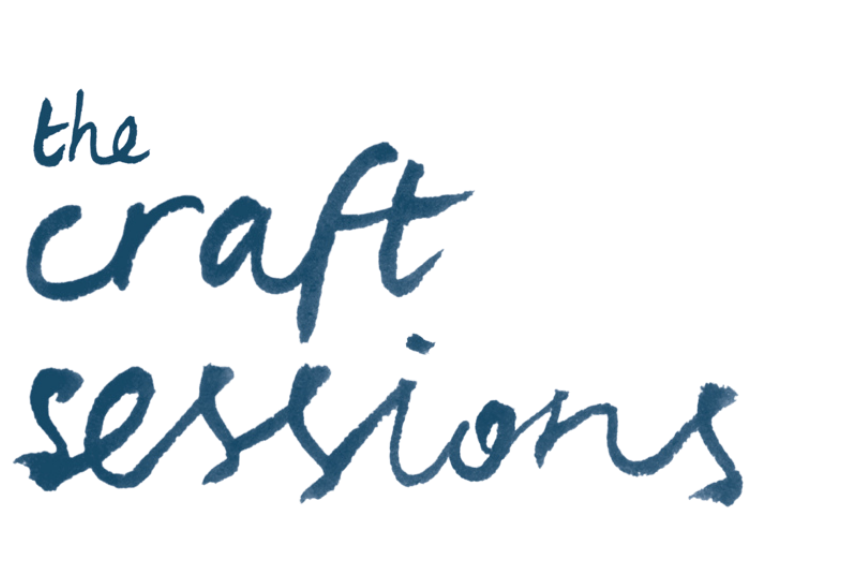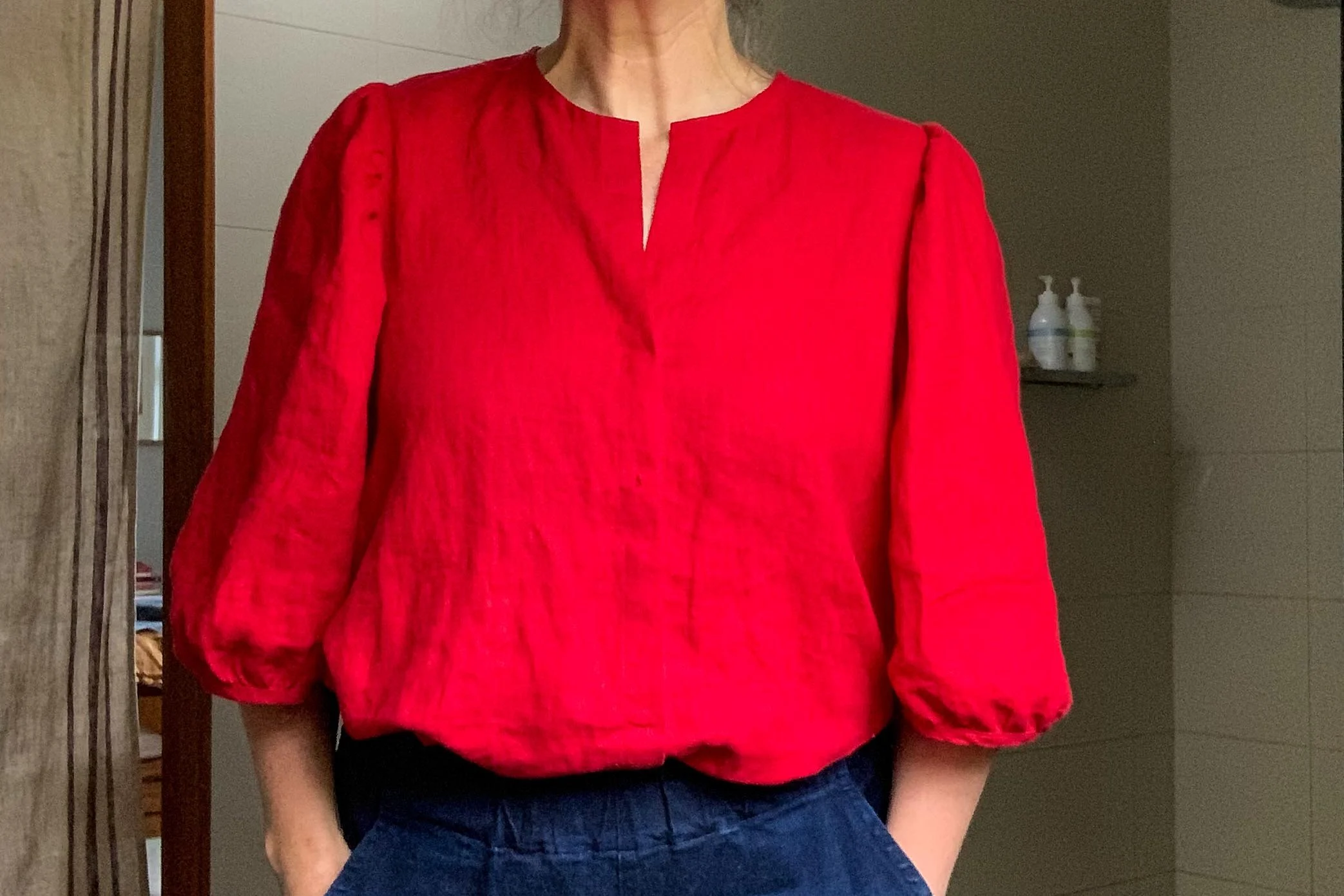* I came across the idea of a virtuous circle/cycle a few years ago and I adored how it gave language to the experience I had in my crafting practice. For those of you who haven’t come heard it before, a virtuous cycle is defined as “a chain of events in which one desirable occurrence leads to another which further promotes the first occurrence and so on resulting in a continuous process of improvement” from Merriam Webster
I wrote this pre-pandemic and just found it in my drafts. x
This morning I’m up early. We have family staying, and the kids are all still sleeping as we kept them up late with a picnic dinner down at the river. I’m hiding in the quiet of the study, and the calm of the day, before another day of holiday chaos starts. As I sit here I can see many things I’ve made, both finished and unfinished. And, although I’m not physically making this morning, I’m still engaged with my making practice - and it’s bringing me joy and a deep sense of satisfaction and meaning.
Recently, as I’ve been getting more obsessed with what the common cultural narrative is about craft, I’ve been looking at what is missing. What is missing from the narrative that limits our understanding about what craft offers us? And, why isn’t the potential a craft practice offers us more widely understood?
I’ve come to believe that a big part of it, is that “what craft is” isn’t broadly understood. When people approach me when I’m out and about to ask me about what I’m making, they appear to believe that the point of the making is to make an object, and therefore that the craft process involves gathering materials and making a thing. The end! The narrative is that we make a sweater to make a sweater; with a clear start point and an end point. This thinking is based on the idea of “craft as a project”. That the process of crafting starts when we gather our materials and finishes when we have an object.
How-to’s in magazines are framed in this way. Craft workshops are often conducted in this fashion. Which makes sense. The making part of a crafting practice is the part that needs a how-to. But there is so much more to what we do than the physical. That said, as workshops and how-tos are some of the only places where crafting is visible to the broader population, this understanding of craft makes sense.
And of course this way of thinking about craft can be true. This is how some people make.
I once attended a chair making workshop that was entirely this. I was given my materials and I made a chair. The process was over and done with in 5.5 hours. Since that day I have never made another chair, or anything approximating a chair, using the skills I learnt on the day…. and yet….
And yet, there was more to the craft process than just the mechanics of making the chair on that day all those years ago. Much to my partner’s horror, that chair has sat in the entry way to our home for the last 10 years. It holds the sunhats. And I absolutely love it. I like that I made a chair. I feel proud of it and it’s wonk. I like the artistic element that I added to the back with some willow, a little nod to a bentwood. Entwined in the pride is the memory that that was one of the first days I walked away from my kids and left them in the super capable hands of their dad. It was a reclaiming of some part of me. I was still breastfeeding at the time and being away for 7 hours felt like I was wagging an exam at school.
Living with that chair is part of why I made it - so I could have it and use it, even if it holds hats and not bottoms due to it’s somewhat dodgy construction. There is joy in the chair that remains to this day. I am still connected to the chair-making in a tangible way, even though the physical act of making happened all those years ago. Connected through the memory I have of that day, the values inherent within it’s construction and the sense of my own capacity I am reminded of as I walk out the door each day. This object is a true craftefact.
We need a more expansive view of the craft process
In order to understand what craft offers us, we need to better understand the expansive nature of the craft process. To do this we need to think about why we do it and what it gives us.
Why do we make stuff? What parts of the practice of making do we get joy or satisfaction from? Do we connect with our values as we make? If so, how? Do we make because we get to engage with our creativity….or use the problem-solving engineering part of our brains? Do we make because of the sense of calm or control we have as we make? Is it that we love living-with the things we have made? Is part of why we make the connection and community we find through our passion for engagement with our hands? Is it the physicality or tactility of the process that fills us up? Is it that it has changed how we see ourselves? What is our why?
My chair is a nod to the Bentwood.
The totality of what a craft practice offers us can be found within the multitude of why’s we hold.
For most of us, I believe that our why’s are a wholehearted and joyful mix of many of these factors and so much more. For me each project has a somewhat different why? Each project has a slightly different intention, and then the process itself reveals a different sense of connection, meaning, achievement or learning. And that is part of the beauty of a craft practice. That “why” has many different answers.
One of the incredible things about a craft practice is it’s versatility - in that it suits humans of all ilks. If one has an interest in it, then craft can suit everyone from the freewheeling creatives, to the rigid everything-in-it’s-place-ers, as we get to bring our whole selves to the table, and engage in a way that suits us best. And yet, in spite of our different crafts, our different ways of engaging in our craft practice, and the different parts practice that we get satisfaction from, then there is commonality to be found in how craft fills us up.
The one thing I do know for certain though is that our why is not ever simply to have a utilitarian object, because then we would buy it rather than make it. In most circumstances it is now so much cheaper to buy instead of make in terms of our time and our resources.
Craftefacts littered through my home.
If we take a step back and think about why we engage with our craft, we find that much of our enjoyment comes from the parts of making that aren’t physical; the parts of making that reside in our heads and hearts rather than our hands. Head, heart and hands are a commonly used analogy that I’m hesitating to use as who wants to be a cliche? And yet….that is what it comes down to. We craft because engaging with the process of crafting makes us feel alive because it engages all parts of us.
Craft as a Virtuous Cycle
In every moment of my life I am engaged in every stage of my craft practice - except, often, the physical making. Like we all do, I have a life that means that my making is often sporadic and I only have small amounts of time to engage. And yet - I am nurtured and uplifted by the other elements of the craft process - the heart parts and the head parts.
Craft is a process that isn’t simply a straight line from materials to object, but rather it is an energetic feedback loop that cycles through the life-elevating process that is hand making. Making making us feel good, leading to more making that makes us feel good, regardless of whether in this moment that making is physical. Our craft practice acting as a virtuous cycle* - an ongoing process of engagement with the parts of me that feel most like me. Making begetting more making, leading to well-being begetting more well-being.
This is what we need to share with the world. That hand making is much more than a production methodology. That craft offers us a way to elevate our lives by elevating what we believe we are capable of, and surrounding us with evidence of the possibility and capacity inherent within us all.
Felicia x





